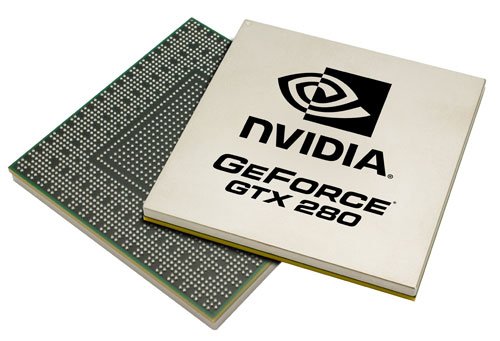
One of the things NVIDIA is stressing with the launch of the GeForce GTX 200 GPUs is the increased role for the GPU in a computing system. The CUDA general-purpose parallel processing mode brings PhysX support to CUDA-enabled graphics cards along with a new generation of programs that tap into the vast processing power of GPUs to significantly speed up certain tasks like video transcoding. The firm claims their GPUs can transcode high-quality video 18x faster than a CPU:
"Millions of users around the world know how time consuming it is to convert their home videos for use on video sharing sites such as YouTube or for downloading to popular media players such as the iPod," said Sam Blackman, CEO of Elemental Technologies. "Elemental has developed the BadaBOOM(TM) Media Converter, a consumer video application scheduled for release in August. By taking advantage of the massively parallel, general-purpose computing architecture of a GeForce GPU, we are able to transcode high-quality video 18 times faster than with CPU-only implementations. This unprecedented performance scaling is the reason why we have made sure that our RapiHD(TM) Video Platform takes advantage of NVIDIA GPUs."Folding@Home is another example of an application that takes advantage of the GeForce GPUs:
By recognizing that the value of a GPU transcends gaming, an increasing number of applications are also being written that use the GPU for straight, non-graphical computational tasks. For example, Stanford University's distributed computing computational program Folding@Home, combines the computing horsepower of millions of consumer GPUs to simulate protein folding to help find cures for diseases such as Alzheimer's or Parkinson's. With the computing processing power of the GeForce GTX family, applications such as Folding@Home and others can run upwards of 140 times faster on an NVIDIA general-purpose parallel processor than on some of today's traditional CPUs.
"GeForce GPUs will soon deliver the biggest boost in processing power we've seen in the history of Folding@Home," said Vijay Pande, Associate Professor of Chemistry, Stanford University. "The GeForce GTX 280 GPU runs Folding@Home 45 times faster than the latest 3GHz Core2 Quad CPU. If just one percent of the world's GeForce 8- and 9-Series GPUs ran Folding@Home, we would have 70 petaflops of processing power to help find cures for disease. That's 10 times more processing power than the world's top 100 supercomputers combined."
